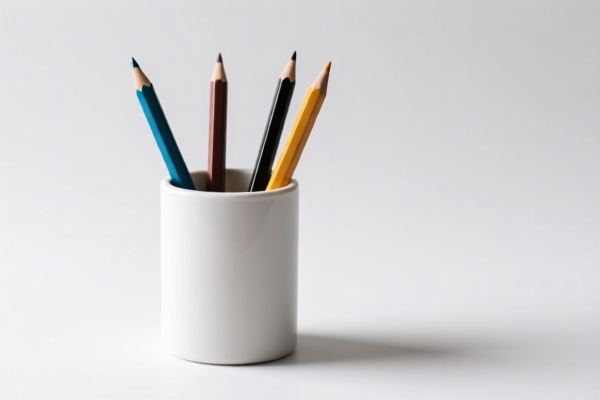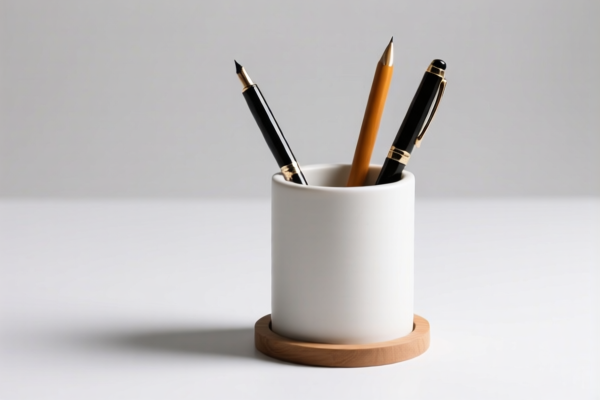| HS Code | Official Doc | Tariff Rate | Origin | Destination | Effective Date |
|---|---|---|---|---|---|
| 4205008000 | Doc | 55.0% | CN | US | 2025-05-12 |
| 4205000500 | Doc | 57.9% | CN | US | 2025-05-12 |
| 4202399000 | Doc | 75.0% | CN | US | 2025-05-12 |
| 9608996000 | Doc | 37.5% | CN | US | 2025-05-12 |
| 9608910000 | Doc | 37.5% | CN | US | 2025-05-12 |
| 9609908000 | Doc | 37.5% | CN | US | 2025-05-12 |
| 9610000000 | Doc | 33.5% | CN | US | 2025-05-12 |
| 3926100000 | Doc | 35.3% | CN | US | 2025-05-12 |
| 3924104000 | Doc | 33.4% | CN | US | 2025-05-12 |
| 3924905650 | Doc | 40.9% | CN | US | 2025-05-12 |




Pen Container
A pen container is a receptacle designed to hold and organize writing implements, primarily pens, pencils, and similar items. These containers come in a wide variety of materials, shapes, and sizes to suit different needs and aesthetic preferences.
Materials
Pen containers are constructed from a diverse range of materials, each offering distinct characteristics:
- Plastic: Lightweight, affordable, and available in numerous colors and designs. Often used for basic, everyday pen holders.
- Metal: Typically stainless steel, aluminum, or brass. Provides durability and a more premium aesthetic. Can be prone to scratches or dents.
- Wood: Offers a classic and natural appearance. Various wood types (oak, bamboo, maple) are used, each with unique grain patterns and finishes.
- Glass/Ceramic: Often used for decorative pen holders. Can be fragile but offers a sleek and elegant look.
- Fabric: Usually canvas or similar materials stretched over a frame. Often used for desk organizers that include multiple compartments for pens and other office supplies.
- Leather/Faux Leather: Provides a sophisticated look and feel. Often used for higher-end desk accessories.
Purpose and Function
The primary purpose of a pen container is organization and accessibility. They prevent pens and pencils from rolling around, becoming lost, or damaged. Beyond basic storage, they contribute to a tidy workspace and facilitate efficient access to writing tools. Some containers also serve a decorative function, adding aesthetic appeal to desks or other surfaces.
Usage Scenarios
Pen containers are found in a variety of settings:
- Home Offices/Study Areas: Used for organizing personal writing instruments.
- Schools/Classrooms: Used by students and teachers to store pens, pencils, markers, and other art supplies.
- Offices/Workspaces: Used by professionals to keep desks organized.
- Art Studios: Used to hold a wider range of art tools, including brushes, colored pencils, and fineliners.
- Reception Areas: Used to provide pens for visitors.
Common Types
- Single Pen Holders: Designed to hold a small number of pens, often used for favorite or frequently used writing instruments.
- Multi-Compartment Organizers: Feature multiple sections for separating different types of pens, pencils, and other supplies.
- Desk Organizers: Larger units that include compartments for pens, pencils, paper clips, sticky notes, and other office accessories.
- Rotating Pen Holders: Allow easy access to all pens within the container by rotating the base.
- Mesh Pen Holders: Typically metal with a mesh design, offering good visibility of the contents.
- Pen Stands: Often used for calligraphy pens or fountain pens, providing a stable base and preventing ink spills.
- Wall-Mounted Pen Holders: Save desk space by mounting on a wall.
Based on the provided information, “pen container” can be classified under several HS codes, depending on the material composition and specific function. Here's a breakdown:
-
9608996000: This code covers “Other” articles related to pens, including pen-holders and similar holders. This is applicable if the container is specifically designed to hold pens and is made of materials not otherwise specified in heading 9608.
- 96: Chapter 96 covers miscellaneous manufactured articles.
- 08: Heading 08 specifically covers pens, pencils, and related articles.
- 996000: This subheading covers other articles within the pen category.
-
3926100000: This code covers “Office or school supplies” made of plastics. If the pen container is manufactured from plastic, this HS code is applicable.
- 39: Chapter 39 covers plastics and articles thereof.
- 26: Heading 26 covers plastics articles.
- 100000: This subheading specifically covers office or school supplies.
-
9610000000: This code covers “Slates and boards, with writing or drawing surfaces, whether or not framed”. While less likely, if the pen container incorporates a writing or drawing surface, this code might be relevant.
- 96: Chapter 96 covers miscellaneous manufactured articles.
- 10: Heading 10 covers slates and boards.
- 000000: This subheading covers all articles within the slates and boards category.
According to the provided reference material, the HS code options related to 'pen container' are limited, with only the following 3 found.
Please note that the final HS code determination depends on the specific material composition and function of the pen container. If the container is made of plastic, HS code 3926100000 is most appropriate. If it's a holder specifically for pens and made of other materials, 9608996000 is more suitable.
Customer Reviews
No reviews yet.